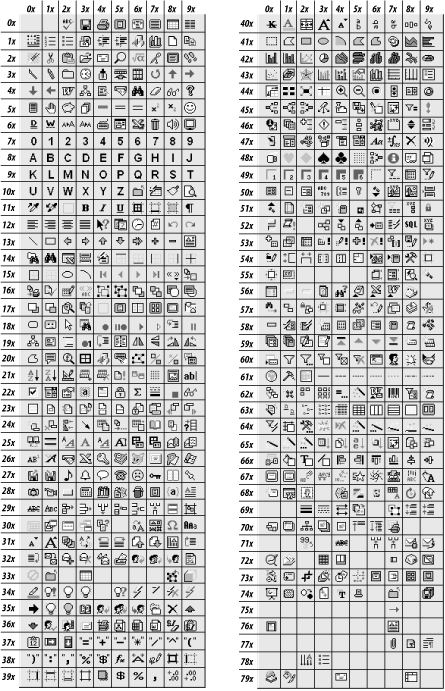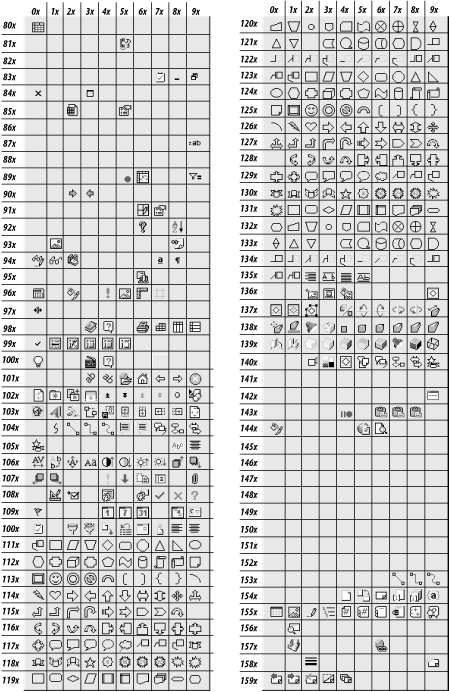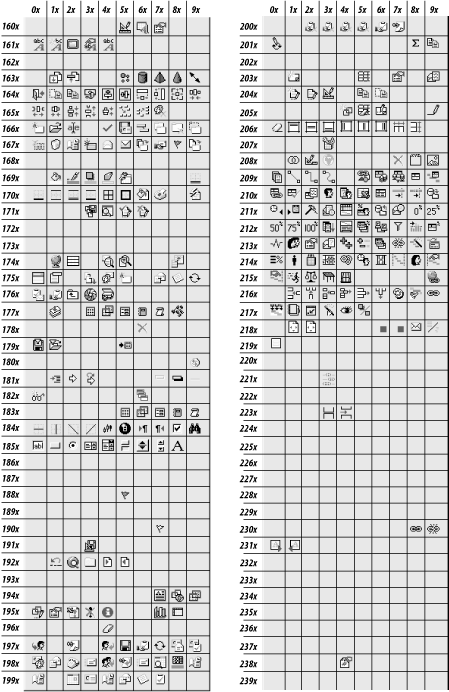Appendix D. Face IDs
The FaceID property of a CommandBarButton object defines the icon that’s displayed on the button’s face. (For an example of using the FaceID property to define the image on a button’s face, see the section “Example: Creating a Toolbar,” in Chapter 12.)
Figure D-1 through Figure D-5 show the icons that are available from Visual Basic, along with their corresponding faceIDs. Each figure shows 400 icons whose beginning and ending faceIDs are shown in the figure caption of the image. In addition, to make identifying a particular faceID easier, a numbered grid has been superimposed on the image. The column numbers indicate the one’s digit; the row numbers indicate all other significant digits. For example, the faceID of the F icon in Figure D-1 is 85, because it’s in row 8x (the row containing faceIDs 80-89) and in column x5 (the column containing faceIDs whose one’s digit is 5).
Note that some numbers aren’t used as faceIDs; in these cases, no icon is displayed in that faceID’s grid in Figure D-1 through Figure D-5.
 |
 |
 |
Get Writing Excel Macros with VBA, 2nd Edition now with the O’Reilly learning platform.
O’Reilly members experience books, live events, courses curated by job role, and more from O’Reilly and nearly 200 top publishers.

